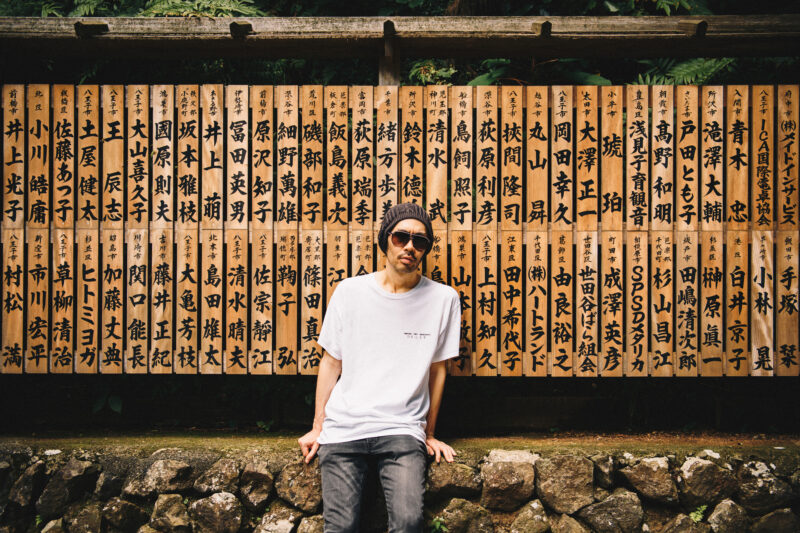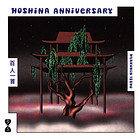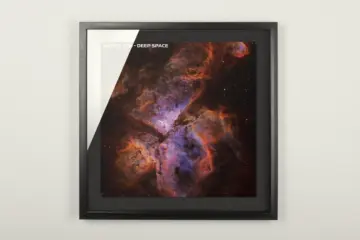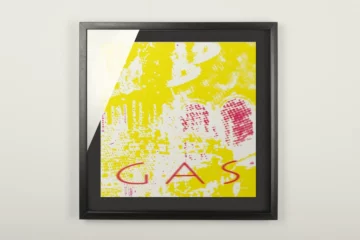No, it’s not a koto, but something like a zither. Or could it be the sound of a tongue drum? Even on the opener of Hoshina Anniversary’s latest album on ESP Institute, called »Jomon«, the realm, in which the record takes place is unclearly defined, somehow hybrid. As soon as the follow-up track »Nakasora« arrives, however, it seems clear where the journey is heading: lush, but dull acid, accompanied by a superbly short, snappy snare drum. We call it techno!
But anyone who has been following Yoshinobu Hoshina’s work for a while knows that his music always distinguishes itself by the fact that it cannot be categorised. Soon »Nakasora« is interspersed with koto sounds – here really – and what has been »techno« before, has long since ceased to be so.
Hoshina’s way of working hardly contributes to the clarification of what his sound really is about: Completely fixated on working with samplers and digital synthesizers, it is usually no longer possible to trace which sound source was the inspiration for this or that sound.
Tradition and modernity
The term the Japanese producer coined for his style is more of a remedy: Watechno. Wa is not only the old Chinese word for Japan itself, but also a cultural concept of harmony. It is about blending into the group, conformity, compromise and rejecting any personal need for recognition.
»›Jomon‹ is a new perspective on Japanese music.It’s the possibility of fusing Japanese music, techno and jazz.«
Hoshina Anniversary
»Wa is Japanese culture. Watechno is the attempt to harmonise Japanese instruments and techno/house,« says Hoshina – who at the same time underplays the fact that a completely different aspect is also harmonised in his music: Jazz.»›Jomon‹ is a new perspective on Japanese music.It’s the possibility of fusing Japanese music, techno and jazz,« says the avowed and passionate jazz fan. How this presents itself at album length: While one could still dismiss the synth run on »Sadacho No Netori« as a funky-jazzy »accident«, »Shin Sekai« already leaves no doubt.
In good company
Here, Herbie Hancock and the recently deceased Armando Chick Corea play a duet – and simultaneously fight out which harmony sequences still make sense and which no longer do. For him, the whole record is a restoration of the crossover music of the seventies, when Chick Corea, James Mason or Steely Dan’s Donald Fagen created brilliant pop music on the basis of jazz. Nevertheless, this should not be old-fashioned – and so Hoshina also incorporates his preference for electronic works such as Aphex Twins’ »Selected Ambient Works Vol.2« or even Radiohead’s »Kid A«.
He is not completely alone with this approach. Especially in Japan, there is a tradition and history of musicians who have either located themselves in jazz or have been received there. This is not only obvious with artists like Yasuaki Shimizu, who has always hopped back and forth between post-punk, city pop, jazz and early electronica as it suited him, but also with the founding father of Japanese techno music, Kuniyuki Takahashi, who does not see himself as an »electro act« per se. And younger generations also start there: Kez YM is so fucking jazzy and even someone like Foodman delivers his very own interpretation of jazzy footwork on record.
»I still think that this inner connection between electronic music and jazz was much easier to understand and recognise in the seventies and eighties,« Hoshina looks back almost melancholically. He also points out that not everything that sounds jazzy is jazz: »There are many techno and house tracks that sample jazz. But it’s actually extremely rare for jazz musicians to play or produce club music – that’s what I’m trying to get across here. It’s also very difficult. It took me at least five years to develop a successful approach.«
Split personality
When asked if he sees a connection with clichés about Japanese perfectionism, he is reserved and cautious: »On the one hand, it is certainly the case that for me and other Japanese musicians, that it is about combining things. Connections are often more important than the perfect execution of the music. On the other hand, I can’t speak for everyone. I often find the sound world here very flat, one could almost say cheap. I, on the other hand, tried to make music like Donald Fagen on ›Jomon‹«.
In addition to his Hoshina Anniversary alias, the Japanese artist also cultivates others: there is Suemori. In this project, many approaches fade into the background; danceability is not at all in the foreground, but rather ambient and drone. Shifting Gears is more informal: here Hoshina assembles mainly 70’s rare soul-inspired dance numbers. Here, too, you can hear again and again how much Yoshinobu Hoshina is influenced by jazz productions of the seventies.
»In the end, however, it must be said that despite all the experimentation, very little music was created that would work in today’s clubs. Maybe something like Jaco Pastorius. Accordingly, it was important to create exactly that: To get jazz, traditional Japanese music and techno under one hat.«











